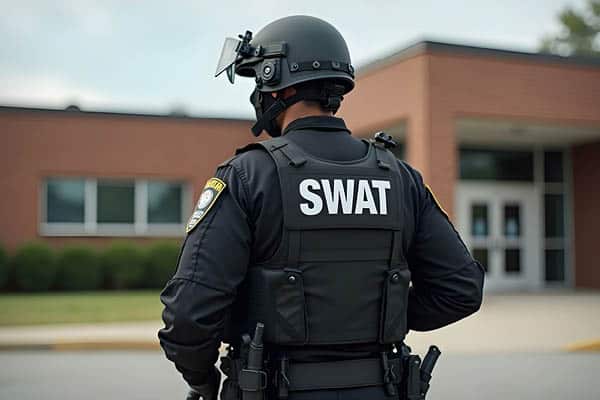In Texas, as across the country, parents and educators are increasingly concerned by the stress on students caused by the threat of school shootings, the San Antonio News reports. Many parents in Texas are questioning if they should pull their children out of public schools in favor of homeschooling.
Threats to shoot up Texas classrooms and hallways have surfaced across state. Many of the culprits are preteens. After the first month of school this year, dozens of threats have led to arrests, campus shutdowns and mounting distress among Texas parents.
“We have definitely seen a rise in students coming in for psychological treatment due to significant anxiety about going to school due to school shooting threats,” Dr. Elena Mikalsen, the chief of pediatric psychology CHRISTUS Children’s, says. “We are particularly seeing a rise in students experiencing worry, panic attacks and traumatic responses, such as flashbacks or avoidance due to active shooter drills and other safety drills.”
The result: parents have started pulling their children out of schools. Mikalsen says her department has seen more parents making this decision – especially elementary student parents because students at that age are more vulnerable to anxiety from active shooter drills.
What can educators do to calm anxious parents?
- Senior administrators, such as the principal, should meet with concerned parents to reassure them of safety measures the school is taking and work on a plan to help their child’s anxiety. Discussion points can include the socialization, educational, emotional and behavioral benefits associated with classroom learning; and homeschooling may not prevent a child’s anxiety from spreading to all public places, according to pediatric psychologists.
- A child who is fearful or anxious should be seen by a mental health professional to work through those thoughts and behaviors, says Mikalsen.
- Schools can help reduce student anxiety or trauma by identifying students with pre-existing psychological symptoms and giving them notice a day before an active shooter drill is conducted.
- The trauma response also can be reduced by talking to young students and comparing active shooter drills to other common safety practices, like fire drills. This helps reassure students there’s no immediate danger but rather a safety precaution is being conducted to practice and be prepared.
Criticism of an active shooter drill video from San Antonio’s Northside Independent School District recently surfaced online. Parents questioned if students as young as third graders should be learning how to respond to such a threat. Mikalsen says families she works with have said they appreciate all the safety measures schools have taken, including locked doors, enhanced security and active shooter training.
San Antonio News





